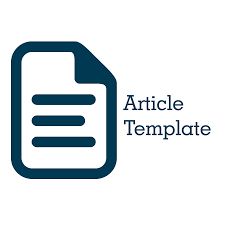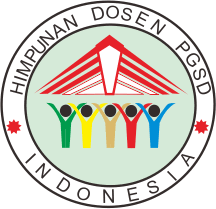Penerapan model pembelajaran structured numbered heads untuk meningkatkan keterampilan berpikir flexibility dan originality pada pembelajaran ips kelas iv sekolah dasar
Abstract
Abstract. The purpose of this research is to improve flexibility and originality thinking skills in Social Sciences lessons through used Structured Numbered Heads learning model for 4th grade of elementary school student at Surakarta on 2018/2019 academic year. The subjects of this research were class teacher and 33 students from 4th grade of elementary school student. The procedure of this research consisted of two cycles, each of that cycles had 4 stages, namely planning, action, observation, and reflection. Data collection techniques used are interviews, observation, flexibility and originality thinking skills tests, and document studies technique. Data validity used is content validity and triangulation technique. Data analysis used is interactive analysis (Miles and Huberman models). The results of the research on flexibility thinking skills increased from initial condition was 21,79 (0%) to 66,73 (55%) in the first cycle, 87,30 (82%) in the second cycle. The results of the research on originality thinking skills increased from initial condition was 25,76 (0%) to 69,61 (55%) in the first cycle, 83,39 (82%) in the second cycle. Based on the results of this research, it was concluded that the flexibility and originality thinking skills of 4th grade elementary school students in social science leasson increased after the Structured Numbered Heads learning model was implemented.
Keywords: flexibility thinking skills, originality thinking skills, social sciences lessons, Structured Numbered Heads learning model, elementary schoolFull Text:
PDFReferences
K Ahmadi and S Amri 2014 Mengembangkan Pembelajaran IPS Terpadu IV (Jakarta: PT Prestasi Pustakaraya) [2] F Budiyono 2018 Analisis Kesulitan Siswa dalam Belajar Pemecahan Masalah pada Mata Pelajaran IPS di SDN Gapura Timur I Sumenep J. Pendidikan Dasar dan Pembelajaran 8(1) 60–67 [3] Sapriya 2019 Pendidikan IPS I (Bandung: PT Remaja Rosdakarya) [4] Depdiknas 2006 Peraturan Menteri Pendidikan Nasional No. 22 Tahun 2006 Tentang Standar Isi [5] Afandi and Sajidan 2017 Stimulasi Keterampilan Berpikir Tingkat Tinggi (Surakarta: UNS Press) [6] S Karakelle 2009 Enhancing fluent and flexible thinking through the creative drama process J. Thinking Skill and Creativity 4(2) 124–129 [7] U Munandar 2014 Pengembangan Kreativitas Anak Berbakat (Jakarta: Rineka Cipta) [8] W Liliawati 2011 Pembekalan Keterampilan Berpikir Kreatif Siswa SMA melalui Pembelajaran Fisika Berbasis Masalah J. Pengajaran MIPA 16(2) 93–98 [9] Z Aqib 2015 Model-Model, Media, dan Strategi Pembelajaran Kontekstual (Inovatif) (Bandung: Yrama Widya) [10] M Huda 2013 Cooperative Learning (Metode, Teknik, Struktur, dan Model Penerapan) (Yogyakarta: Pustaka Pelajar) [11] Sugiyono 2015 Metode Penelitian Pendidikan (Pendekatan Kuantitatif, Kualitatif, dan R&D) (Bandung: Alfabeta) [12] Direktorat Jenderal Pendidikan Dasar dan Menengah Kementrian Pendidikan dan Kebudayaan 2016 Panduan Penilaian untuk Sekolah Dasar [13] S M Manobe and K W Wardani 2010 Peningkatan Kreativitas Belajar IPA Menggunakan Model Problem Based Learning pada Siswa Kelas 3 SD J. Didaktika Dwija Indria 6(8) 159–171 [14] R Carito, Kuswadi, and Chumdari 2013 Penerapan Pendekatan Savi (Somatis Auditori Visual Intelektual) untuk Meningkatkan Kreativitas dalam Pembelajaran Matematika Volume Bangun Ruang J. Didaktika Dwija Indria 1(1) 1–6 [15] Kartono, Marwiyanto, and Nurhidayah 2011 Peningkatan Kreativitas dan Motivasi Belajar IPA melalui Pembelajaran Kontekstual J. Didaktika Dwija Indria 1(1) 1–21
Refbacks
- There are currently no refbacks.



